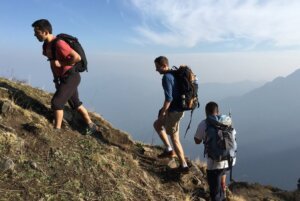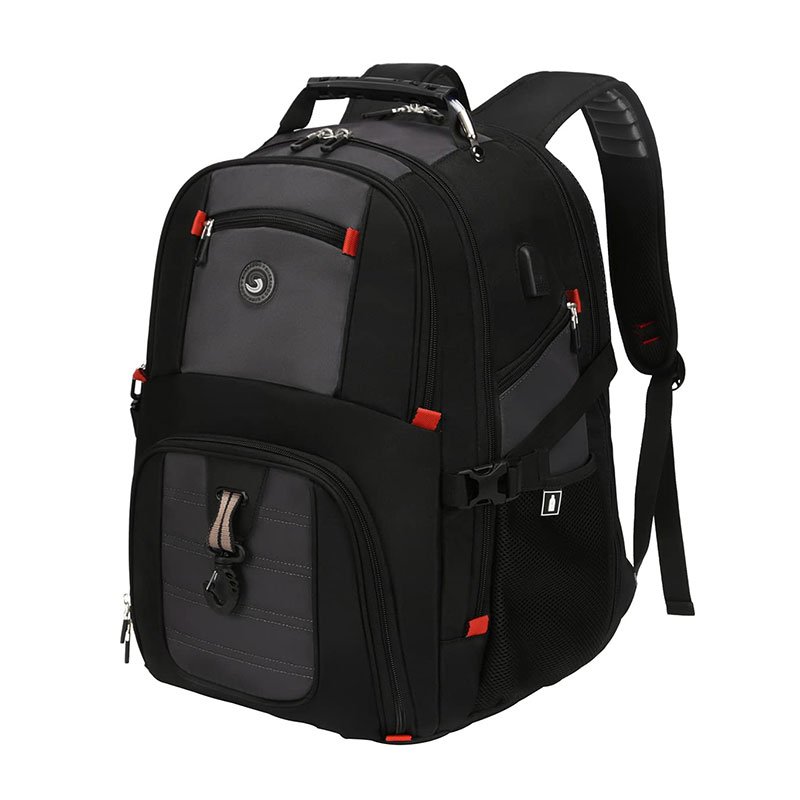A good backpack for Hiking should provide several requirements, from comfort and practicality to durability and security. Whether you’re embarking on the adventure of a lifetime or heading off on a weekend city break, a good backpack is an essential part of your travel kit.
Selecting the right backpack for your hiking or backpacking adventure is crucial for comfort and functionality. Here's a step-by-step guide to help you make the right choice and properly fit your backpack:
-
Determine your needs
Before you start shopping, consider the following factors:
Type of Activity
Day hiking, overnight backpacking, or multi-day trekking?
Duration
How long will you be out in the wilderness?
Load Capacity
How much gear and supplies will you be carrying?
Personal preferences:
Do you have any specific requirements, such as a hydration system, additional pockets, or a certain aesthetic?
-
Choose the right backpack size
Backpacks come in various sizes, typically measured in liters (capacity) and inches (torso length). The backpack's capacity will depend on the length of your trip and the amount of gear you need to carry. A good rule of thumb is to choose a backpack with a capacity of 30-50 liters for a day hike, 50-70 liters for a weekend trip, and 70 liters or more for multi-day trips.
Capacity
Day hiking (15-30 liters):
Suitable for single-day hikes, carrying essentials like water, food, and extra layers.
Overnight backpacking (30-50 liters):
Ideal for 1-2 night trips, with room for a tent, sleeping bag, and cooking gear.
Multi-day trekking (50-75+ liters):
Designed for longer expeditions, accommodating more supplies, and offering additional features like external attachment points.
Torso length
To determine your torso length, measure the distance between your C7 vertebra (the bony bump at the base of your neck) and your iliac crest (the top of your hip bones). Backpacks usually come in small, medium, and large torso sizes. Check the manufacturer's sizing chart to find the right fit.
Weight
The lighter the backpack, the more comfortable it will be to carry. Look for a backpack made from lightweight materials, such as nylon, and avoid bulky or heavy backpacks.
-
Select the appropriate backpack features
Look for a backpack with features that meet your specific needs. Consider features such as hydration compatibility, compression straps, external pockets, and gear loops. Some important features to consider are:
Frame type:
Internal frame backpacks are more streamlined and better for load stability, while external frame backpacks offer better ventilation and are easier to organize.
Ventilation:
Some backpacks have a tensioned mesh back panel for improved airflow, reducing sweat buildup.
Hydration compatibility:
Look for a backpack with a built-in hydration reservoir or external hydration sleeve if you plan to use a hydration system.
Pockets and compartments:
Consider the number and types of pockets and compartments you need for easy organization and access to your gear.
Attachment points:
For trekking poles, ice axes, and other gear, look for backpacks with external attachment points.
-
Fit your backpack properly
A comfortable backpack is essential for a pleasant hiking experience. Look for a backpack with adjustable straps and a padded back panel to ensure a proper fit. The backpack should sit comfortably on your hips, with the weight distributed evenly between your hips and shoulders. Follow these steps to ensure a comfortable fit:
Loosen all the straps:
Before putting on the backpack, loosen the shoulder straps, hip belt, and load lifter straps.
Position the hip belt:
Place the backpack on your back and buckle the hip belt, ensuring that it rests on your iliac crest. Tighten the hip belt snugly.
Adjust the shoulder straps:
Pull the shoulder straps tight so the backpack sits close to your back, but don't over-tighten them. The majority of the weight should be on your hips, not your shoulders.
Tighten the load lifter straps:
These straps connect the top of the shoulder straps to the backpack. Tighten them to help stabilize the load and bring it closer to your back.
Adjust the sternum strap:
Buckle the sternum strap across your chest and tighten it for additional stability. It should sit about an inch below your collarbone.
Try before you buy:
It's essential to try on a backpack before you buy it to ensure a proper fit. Remember to pack your backpack with your gear and walk around to see how it feels before heading out on your adventure. Load the backpack with weight equivalent to what you plan to carry on your hike and walk around the store to see how it feels. Make any necessary adjustments to ensure optimal comfort and load distribution.

By considering these factors, you can choose a backpack that fits your needs, is comfortable to wear, and enhances your outdoor experience.





